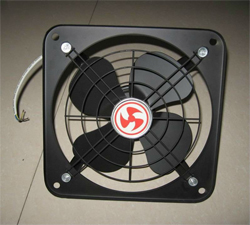
Categories
- Home
- Air Ventilation Fans
- Attic Ventilation Fans
- Barn Ventilation Fans
- Basement Ventilation Fans
- Bathroom Ceiling Ventilation Fans
- Bathroom Ventilation Fans
- Bathroom Ventilation Fans Installation
- Bathroom Ventilation Fans with Light
- Bathroom Wall Ventilation Fans
- Best Bathroom Ventilation Fans
- Best Ventilation Fans
- Ceiling Ventilation Fans
- Centrifugal Ventilation Fans
- Commercial Kitchen Ventilation Fans
- Commercial Ventilation Fans
- Confined Space Ventilation Fans
- Crawl Space Ventilation Fans
- Domestic Ventilation Fans
- Ductless Ventilation Fans
- Electric Ventilation Fans
- Exhaust Ventilation Fans
- Explosion Proof Ventilation Fans
- Fans for Ventilation
- Garage Ventilation Fans
- Greenhouse Ventilation Fans
- Home Ventilation Fans
- House Ventilation Fans
- Hunter Ventilation Fans
- In Line Ventilation Fans
- Industrial Roof Ventilation Fans
- Industrial Ventilation Fans
- Inline Ventilation Fans
- Jet Fans Basement Ventilation
- Kitchen Ventilation Fans
- Large Ventilation Fans
- Marine Ventilation Fans
- Mine Ventilation Fans
- Mining Ventilation Fans
- Panasonic Bathroom Ventilation Fans
- Panasonic Ventilation Fans
- Penn Ventilation Exhaust Fans
- Penn Ventilation Fans
- Portable Ventilation Fans
- Positive Pressure Ventilation Fans
- Quiet Ventilation Fans
- Roof Ventilation Fans
- Rooftop Ventilation Fans
- Room Ventilation Fans
- Shower Ventilation Fans
- Sidewall Ventilation Fans
- Small Ventilation Fans
- Solar Attic Ventilation Fans
- Solar Powered Attic Ventilation Fans
- Solar Roof Ventilation Fans
- Solar Ventilation Fans
- Sub Floor Ventilation Fans
- Tunnel Ventilation Fans
- Under House Ventilation Fans
- Underfloor Ventilation Fans
- Underground Ventilation Fans
- Ventilation Fans
- Ventilation Fans Bathroom
- Ventilation Fans FAQs
- Ventilation Fans for Grow Rooms
- Ventilation Fans for Kitchens
- Ventilation Fans Home
- Ventilation Fans Manufacturers
- Ventilation Fans Reviews
- Ventilation Fans Suppliers
- Wall Mounted Ventilation Fans
- Wall Ventilation Fans
- Whole House Ventilation Fans
- Window Ventilation Fans
- Woods Ventilation Fans
Basement Ventilation Fans
The use of ventilation fans in domestic environments is the norm. It is impossible to find a home without ventilation systems, or at least a single ventilation fan installed. The specific rooms of a house where it is a must to install fans for ventilation are kitchens, bathrooms, attics, garages and basements. These are the spaces where natural ventilation is limited, and hence mechanical ventilation needs to be made use of.
What are Basement Ventilation Fans?
As the name suggests, basement ventilation fans are used for the purpose of circulating fresh air inside basements. Basements are located at the bottom of a building and seldom get fresh air or sunlight. They are used as storage spaces for items that are hardly used or moved around. It is not every day that all the items in the basement are accessed. Chemical substances such as paints and cleaning materials may also be stored.Given the type of environment in a basement, it is common to find the air inside to be damp, stale and stuffy. Allergens and toxic gases may fill the air. Moisture trapped inside may cause the formation of fungus and mold. This creates a harmful, hazardous environment for people to breathe in. To prevent this, basement ventilation fans are used, which remove stale air and replace it with fresh, clean air.
Types of Basement Ventilation Fans
Based on the type of installation, model, design, size, etc. basement ventilation fans can be of different types.- Installation: Basement ventilation fans are most often wall mounted. This is an intermittent system of ventilation, confined to a single room. Installed on an exterior wall, the fan removes stale air and expels it outside. Continuous or whole house ventilation may be extended to the basement too. This type of ventilation covers air circulation in the entire building through vents and ducts in the ceiling. It can be installed in the basement, along with ventilation for the rest of the house.
- Size and Speed: The size of the ventilation fan is very important. Since basements are usually large rooms, a small fan would not be sufficient to create the necessary ventilation. The volume of ventilation is higher with larger fan blades that move faster. Varying speed levels are a good feature to go for, in order to adjust the volume of ventilation according to requirement.
- Automatic Controls: Basement ventilation fans installed with temperature and humidity sensors are quite useful. When the heat and humidity in the basement cross a certain level, the fan is switched on automatically. This eliminates the need for constant monitoring of the ventilation in the basement.
- CFM: The volume of air flow produced by the fan is measured in CFM. The higher the CFM of the fan, the more beneficial it is. Of course, the ventilation requirement of the room also needs to be kept in mind.
Back to Top
